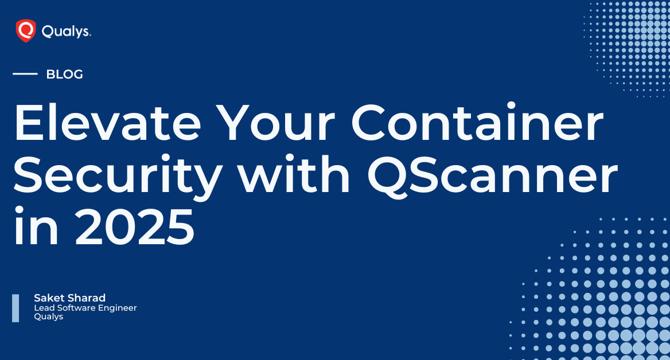Qualys
7d
53

Image Credit: Qualys
Elevate Your Container Security with QScanner in 2025
- Qualys has launched QScanner, a command-line utility that helps scan and maintain robust security while providing vulnerability reports directly inline in the command-line interface. QScanner is standalone and can seamlessly integrate into various tools and workflows without any installation or deployment. QScanner identifies vulnerabilities in operating system and software packages and performs comprehensive software composition analysis supporting language-based packages for Ruby, Rust, PHP, Java, Go, Python, .NET, and Node.js.
- QScanner offers centralized policy management through the Qualys Portal without interfering with developer or DevOps workflows, and integrated with CI/CD pipelines to automate security checks during the build and deployment processes. The tool can even be used to scan container images for custom workflows or custom tooling adaptable to various tools and systems. QScanner works with local runtimes, local archives, and remote registries, and offers immediate feedback in the command-line interface.
- With QScanner, organizations can safeguard sensitive data and meet compliance requirements. The vulnerability reports provide a quantifiable measure of the risk associated with each container image, allowing organizations to prioritize remediation efforts. The tool scans for exposed secrets, such as passwords, API keys, and tokens, and enhances security posture, ensuring that only secure and compliant images are deployed to environments.
- QScanner simplifies container image security and empowers CISOs, DevSecOps teams, engineers, and developers to secure container images efficiently. Additionally, QScanner has flexible scanning capabilities, automated security checks, and centralized policy enforcement. The seamless integration facilitates a shift-left approach, addressing security concerns while enhancing productivity.
- QScanner is a standalone executable – just download it and start scanning. Unlike traditional tools requiring bulky setup and configurations, no installation or deployment is needed.
- QScanner identifies vulnerabilities in OS and software packages within your container images. Leveraging the same trusted engine with 99.99966% Six Sigma accuracy, maintained by over 35 threat feeds and the threat research team, QScanner ensures highly accurate and reliable vulnerability detection.
- QScanner performs software composition analysis (SCA), supporting language-based packages for Ruby, Rust, PHP, Java, Go, Python, .NET, and Node.js. The vulnerabilities detected by QScanner contribute to calculating the TruRisk score, a quantifiable score for assessing risk associated with each container image.
- If secrets within container images are not properly secured, they can be accessed by unauthorized users, leading to malicious attacks. QScanner proactively scans for exposed secrets such as passwords, API keys, and tokens, helping safeguard sensitive data, meet compliance requirements, and reduce the risk of security incidents.
- Local runtimes such as Docker, Containerd, or Podman, local archives, and remote registries like AWS ECR, Azure Container Registry, JFrog, GHCR, and more are supported. QScanner provides immediate vulnerability reports directly in your console with output formats like SBOM, JSON, Table, and SARIF, allowing for integration with various tools and workflows.
- QScanner offers centralized policy management through the Qualys Portal without interfering with engineering or DevOps workflows while allowing security teams to configure policies to ensure all scans automatically adhere to organizational policy standards, thereby enhancing overall security posture without hindering productivity.
- For organizations with custom tooling, QScanner offers the flexibility to fit into existing processes. Its command-line interface and support for various output formats make it adaptable to automate custom deployment scripts and specialized monitoring systems to meet specific needs without adding complexity.
Read Full Article
3 Likes
For uninterrupted reading, download the app